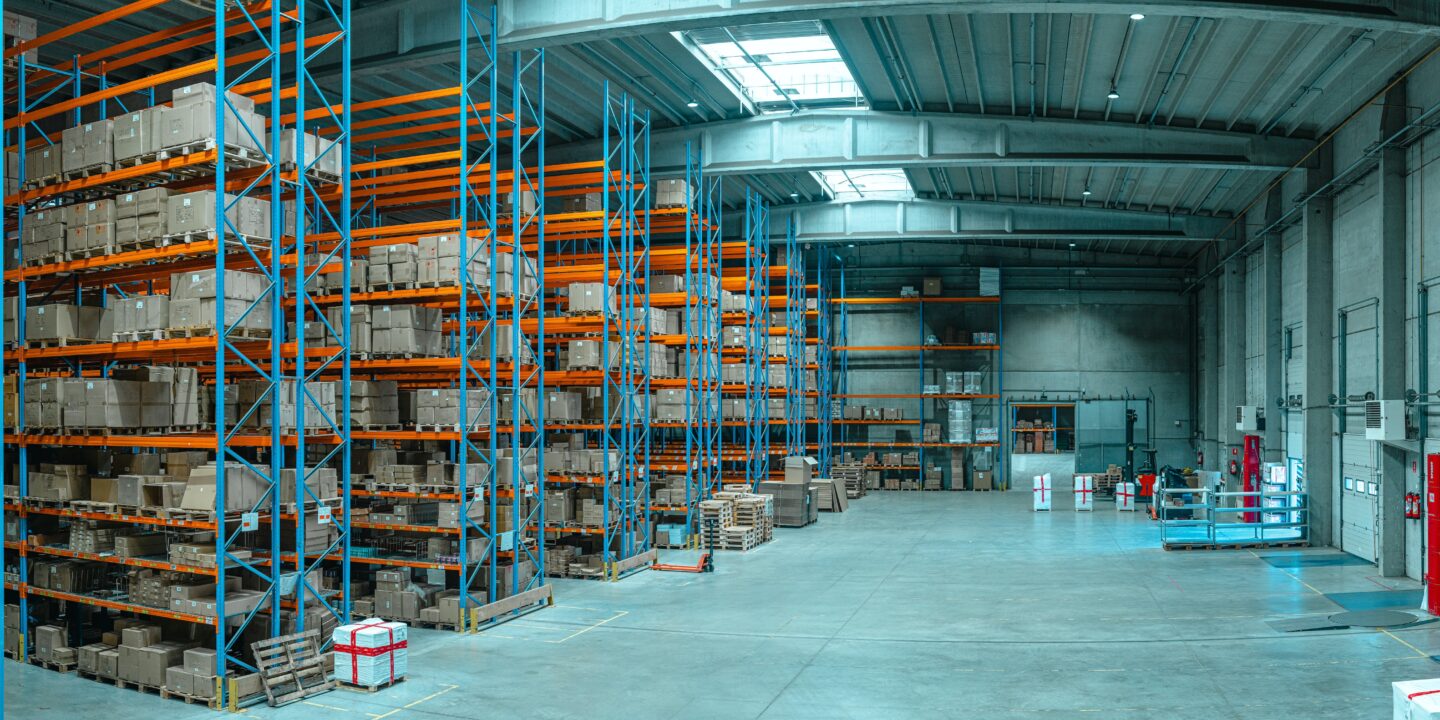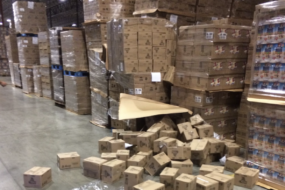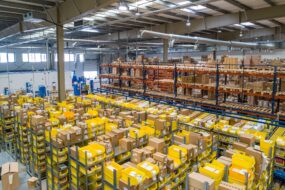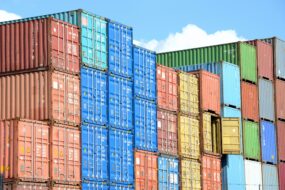Contents

A fulfillment center is a facility from where orders, typically online orders, are received, processed, and shipped to customers directly through a major parcel carrier like UPS.
A distribution center is typically a large-scale facility where products are stored and later shipped to retailers, other distribution centers, or directly to consumers. This article will shed light on their roles, similarities, and differences, and how to choose between the two.
What are Fulfillment Centers?
Fulfillment Centers are specialized facilities that handle the storage, packaging, and shipping of products for eCommerce businesses. Their role in the eCommerce landscape is integral, as they ensure that customers receive their orders accurately and on time. These centers offer a range of services, including inventory management, order processing, packaging, shipping, and sometimes even returns management.
Using Fulfillment Centers, like Outbound Fulfillment as one example, comes with several advantages. They can effectively manage and streamline the shipping process, making sure customers get their orders promptly. They are often equipped with advanced technology to track inventory and order status in real-time. Moreover, they allow eCommerce businesses to focus on their core competencies while outsourcing logistics operations.
However, they also face some challenges. These include managing high volumes of orders, especially during peak seasons, handling returns efficiently, and dealing with inventory errors or shipping delays, which can impact customer satisfaction.
What are Distribution Centers?
Distribution Centers are larger facilities that act as the intermediary storage points in the supply chain. They receive goods from various suppliers, store them, and then distribute them to retailers or, in some cases, directly to consumers. In theory, a distribution center consolidates products from multiple brands and clients, and then delivering larger shipments to other big box store’s distributions, which can reduce the costs for all customers that participate.
The primary role of Distribution Centers is to streamline the supply chain and efficiently manage product flow from manufacturers to retailers or consumers. They provide services such as storage, inventory management, order picking and packing, and transportation coordination.
One of the premier distribution companies is the Reyes Beverage Group which acts as consolidator of and delivering it to the end stores.
Comparison of Fulfillment Centers and Distribution Centers
Fulfillment Centers and Distribution Centers share some similarities. They both play critical roles in inventory management, have similar operational processes like receiving, storing, and shipping goods, and extensively use technology for tasks like inventory tracking, order management, and automation of various processes.
However, their differences lie mainly in their functions and services. Fulfillment Centers primarily serve eCommerce businesses and focus on direct-to-customer deliveries, while Distribution Centers generally service retailers and focus on bulk shipments. Fulfillment Centers may offer value-added services like kitting, gift-wrapping, or returns handling, which Distribution Centers usually do not.
They also differ in the types of customers they serve – Fulfillment Centers mainly deal with end consumers, while Distribution Centers primarily interact with other businesses. Furthermore, the cost and efficiency considerations vary, with Fulfillment Centers typically requiring higher per-unit processing due to direct customer engagement, and Distribution Centers focusing on economies of scale.
How to Choose Between a Fulfillment Center and Distribution Center
Choosing between a Fulfillment Center and a Distribution Center depends on several factors. Your business model is crucial – if you primarily sell online, a Fulfillment Center is likely more suitable given their set up with the parcel carriers like Fedex and UPS. The type and volume of products you handle are also key considerations – if you deal with large volumes or need bulk shipments, a Distribution Center might be more beneficial. Your customer base and geographic reach play a role too. For instance, if you need to deliver goods directly to customers worldwide, a Fulfillment Center with global reach is ideal. Lastly, budget constraints are also critical. You need to assess the costs associated with each option and decide what’s most feasible for your business.
In scenarios where you have a predominantly online retail operation with direct-to-customer shipping, Fulfillment Centers are your go-to option. Conversely, if you’re a manufacturer or wholesaler supplying to a network of retailers, a Distribution Center will serve your needs better.
In conclusion, both Fulfillment Centers and Distribution Centers have significant roles in today’s dynamic business environment. Understanding their differences and similarities can help businesses make an informed choice based on their specific needs. Always remember to evaluate all factors thoroughly and consult with logistics experts if needed, to ensure you choose the optimal solution for your business.




